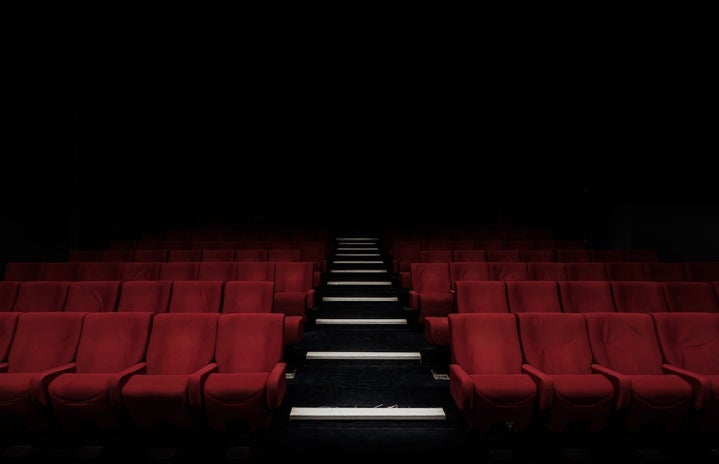Horror, along with stigmas and uncertainties, is an extremely attractive entertainment genre for many people. It is plausible to believe that this is because we are dealing with a feeling we are unable to control. The fright, fear, apprehension, and shock, among many other emotions attributed to these works, transport the viewer to a completely different universe that keeps them fully attentive and alert.
Regarding these great horror stories, it is important to highlight that they did not originate solely from the minds of great filmmakers but also from great writers. Horror was born in literature. Great European medieval works, including prominent ones such as those by William Shakespeare, dealt with witches, ghosts, and curses in his early theatrical plays.
Dracula (1897), written by Bram Stoker, was a watershed moment in the creation of the genre. An essence was established that would later be followed by great authors such as Edgar Allan Poe, Arthur Conan Doyle, Robert Louis Stevenson, M. G. Lewis, Mary Shelley, among others, who laid the foundation for what would be produced in the movie industry in the future.
Like it or not, the stories we grew up with all have some connection to the fantastic and an escape from reality, whether they involve princes and princesses, talking animals, evil witches and their curses, or abandoned castles. This may help explain the rise of horror films after the 1920s and the great success of modern authors and filmmakers like Stephen King and Tim Burton.
The recognition of a new cinematographic genre was triggered by The Cabinet of Dr. Caligari (1921), directed by Robert Wiene, which introduced audiences to a new form of psychological terror. Two additional milestones in this genre include Nosferatu (Murnau, 1922) and The Phantom of the Opera (Rupert Julian, 1925).
The fact is that the genre did not initially have the same level of impact as the horror we know today. However, in 1968, Roman Polanski shocked audiences with Rosemary’s Baby, which laid the foundation for the genre’s rise to prominence in the 1970s.
The golden phase, the renowned 1980s, marked a turning point. From this period onward, notable works and filmmakers emerged, embracing a more explicit style of horror, along with advances in camera techniques and special effects.
A prime example is Friday the 13th (1980), which attracted a significant teenage audience. Despite being made on a very low budget and with a script that many considered weak, as acknowledged by the director Sean Cunningham, the film became a classic. It also introduced one of cinema’s greatest villains: Jason. The plot, centered on the “unlucky day,” aimed to instill fear, with the film filled with explicit deaths while offering moments of comic relief through the character of Officer Dorf and the teenage protagonists.
The character of Jason Voorhees placed Friday the 13th within the ‘slasher’ subgenre, characterized by a psychopath who randomly kills numerous people. This leads to the iconic figure of Freddy Krueger, recognizable by his green and red striped sweater, hat, and claws, who needs no introduction.
Following a similar path, A Nightmare on Elm Street (1984), directed by Wes Craven, tells the story of four teenagers in a small town who are terrorized by Freddy, a former prisoner released by corrupt police and later burned to death by the parents of his victims. The film is filled with memorable scenes, powerful dialogue, and haunting music, including an eerie lullaby. Unlike Jason, Freddy targets his victims in their dreams, a twist that heightens the suspense and adds layers of interpretation to the film’s conclusion.
Clearly, over the years, several stories have been repeatedly showcased in cinema, all featuring impressive effects aimed at inducing terror. For many years, even up to the present day, there has been a noticeable reluctance among a significant portion of the audience to watch new productions in this genre, largely due to the repetition of plots and a lack of creativity.
With this in mind, there is no definitive formula. Although nothing is entirely original and much is influenced by previous works, all the films mentioned and those that will follow, despite their similarities, have contributed something new and frightening, drawing from great literature and the imagination of their creators.
As we look forward to a resurgence in global horror cinema, particularly with the arrival of one of the best times of the year— Halloween — here is a list of five classic films from the great spooky eras for a marathon. Enjoy the session, creature!
PSYCHO, Alfred Hitchcock (1960)
Psycho is an extremely intelligent film – it presents the case of sociopathy in such a realistic manner that it became a basis for studies in the following decades. Diving into the universe of the 1960s and watching it while considering the reality of that time enhances the experience.
THE TEXAS CHAIN SAW MASSACRE, Tobe Hooper (1974)
Four friends on a road trip through Texas experience an unwanted encounter with Leatherface, one of the biggest horror icons. The title itself foreshadows the brutalities they are about to face.
CARRIE, Brian De Palma (1976)
Carrie possesses a powerful mind, much to the discomfort of those who have mistreated her. The humiliation she experiences after getting her period in the school bathroom serves as a trigger for the major events unleashed by her telekinetic abilities.
THE SHINNING, Stanley Kubrick (1980)
Shelley Duvall and Jack Nicholson portray a couple who, along with their son, move into the Overlook Hotel. This change occurs during the winter season, leaving the hotel closed and isolated. “Here’s Johnny“!
PET SEMETARY, Mary Lambert (1989)
The plot is based on Stephen King‘s novel Pet Sematary. The story involves the death of a cat buried near an old animal cemetery, which is, by the way, cursed. Subsequently, the cat comes back to life—but perhaps he is not the only one.
—————————————————————–
The article above was edited by Mariana do Patrocínio.
Liked this type of content? Check out Her Campus Cásper Líbero home page for more!


